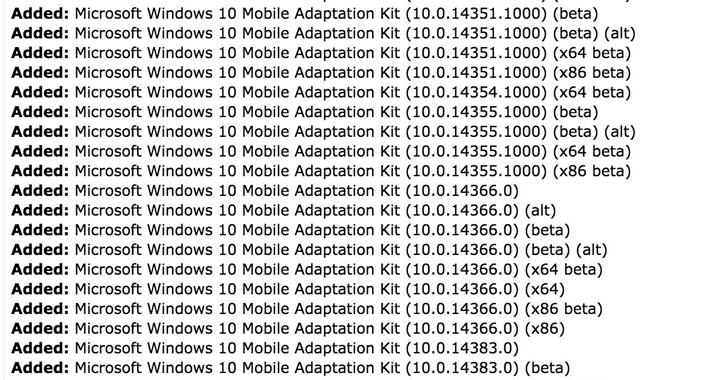A massive archive of Microsoft's top-secret Windows 10 builds, and the source codes for private software has been reportedly leaked online, which could lead to a nasty wave of Windows 10 exploits.
The Leaked files – uploaded on BetaArchive website – contains more than 32 terabytes of data, which includes many non-public Windows 10 and Windows Server 2016 builds created by Microsoft engineers for testing purpose.
“We have removed it from our FTP and listings pending further review just in case we missed something in our initial release. We currently have no plans to restore it until a full review of its contents is carried out, and it is deemed acceptable under our rules.” BetaArchive said.
The leaked files also contain Microsoft's Windows 10 Mobile Adaptation Kit, a private software toolkit created by Microsoft designed to run Windows 10 operating system on mobile devices.
So far, it’s unclear who is behind this massive leak, but it could be from one of the Microsoft OEM partners.
Stay tuned for more information.
The Leaked files – uploaded on BetaArchive website – contains more than 32 terabytes of data, which includes many non-public Windows 10 and Windows Server 2016 builds created by Microsoft engineers for testing purpose.
Interestingly, Windows 10 internal builds include private debugging symbols defined by the engineers usually to help other in-house developers understand how some specific codes in the operating system works and what functions it calls, the Register reports.
Private debugging symbols reveal some sensitive in-depth knowledge about the operating system that could be used by exploit writers to find vulnerabilities.
Moreover, the dump also contains Microsoft's Shared Source Kit, which includes source code for Windows 10 hardware drivers, such as:
However, BetaArchive has now removed the confidential ‘Shared Source Kit’ from its servers.
Private debugging symbols reveal some sensitive in-depth knowledge about the operating system that could be used by exploit writers to find vulnerabilities.
Moreover, the dump also contains Microsoft's Shared Source Kit, which includes source code for Windows 10 hardware drivers, such as:
- Plug-and-Play system
- USB Stacks
- Wi-Fi Stacks
- Storage Drivers
- ARM-specific OneCore kernel code
However, BetaArchive has now removed the confidential ‘Shared Source Kit’ from its servers.
“We have removed it from our FTP and listings pending further review just in case we missed something in our initial release. We currently have no plans to restore it until a full review of its contents is carried out, and it is deemed acceptable under our rules.” BetaArchive said.
The leaked files also contain Microsoft's Windows 10 Mobile Adaptation Kit, a private software toolkit created by Microsoft designed to run Windows 10 operating system on mobile devices.
So far, it’s unclear who is behind this massive leak, but it could be from one of the Microsoft OEM partners.
Stay tuned for more information.




